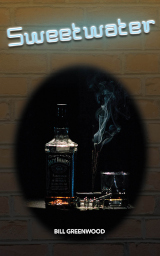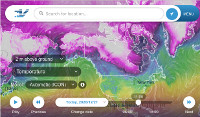Why this blog?
Until this moment I have been forced to listen while media and politicians alike have told me "what Canadians think". In all that time they never once asked.
This is just the voice of an ordinary Canadian yelling back at the radio -
"You don't speak for me."
email Kate
Goes to a private
mailserver in Europe.
I can't answer or use every tip, but all are appreciated!


Katewerk Art
Support SDA
Paypal:
Etransfers:
katewerk(at)sasktel.net
Not a registered charity.
I cannot issue tax receipts
Favourites/Resources
Instapundit
The Federalist
Powerline Blog
Babylon Bee
American Thinker
Legal Insurrection
Mark Steyn
American Greatness
Google Newspaper Archive
Pipeline Online
David Thompson
Podcasts
Steve Bannon's War Room
Scott Adams
Dark Horse
Michael Malice
Timcast
@Social
@Andy Ngo
@Cernovich
@Jack Posobeic
@IanMilesCheong
@AlinaChan
@YuriDeigin
@GlenGreenwald
@MattTaibbi
Support Our Advertisers

Sweetwater

Polar Bear Evolution

Email the Author

Pilgrim's Progress

How Not To Become A Millenial

Trump The Establishment
Wind Rain Temp

Seismic Map

What They Say About SDA
"Smalldeadanimals doesn't speak for the people of Saskatchewan" - Former Sask Premier Lorne Calvert
"I got so much traffic after your post my web host asked me to buy a larger traffic allowance." - Dr.Ross McKitrick
Holy hell, woman. When you send someone traffic, you send someone TRAFFIC.My hosting provider thought I was being DDoSed. - Sean McCormick
"The New York Times link to me yesterday [...] generated one-fifth of the traffic I normally get from a link from Small Dead Animals." - Kathy Shaidle
"You may be a nasty right winger, but you're not nasty all the time!" - Warren Kinsella
"Go back to collecting your welfare livelihood. - "Michael E. Zilkowsky
I take it made of Cheese was wrong?
Damn.
Some of the commenters there are absolutely retarded.
Saying we shouldn’t mine it because a Space:1999 type accident could screw up the tides, cause earthquakes, etc.
Some time ago, I did the math:
To add 20 kps speed to the moon to get it up to solar escape velocity would take many millions of tons of antimatter worth of energy.
Space sickness is your body trying to reverse evolution being away from our planet surface.
Hence the impossibility of space travel or colonizing another planet is beyond our bodies capability.
The longest someone has spent in space to date is 14 months.
The only real problem is microgravity, and bones and muscles atrophying.
Is 1/6 G enough? We’ll find out sooner or later.
YeahWell when they got back apes had taken over the earth but we fought back and defeated Medicaid… With my six handicap.
Kate – good intro. 90% of scientists were expecting an earth shattering Kaboom too.
A graphic dud.
So here’s an interesting question : If satellites can record with clarity, a corner rural mailbox on earth from Space, then how come there are no present day available pics of late ’60’s / ’70’s manned lunar activity, (there should be a lunar dune buggy up there and more)?
Should be a pretty easy task given today’s technology
What ….. no interest in the affects of 50 plus years of bombardment by space particles on the components left in a zero atmosphere environment?
Maybe this’ll help?
https://skyandtelescope.org/observing/how-to-see-all-six-apollo-moon-landing-sites/
Well, most satellites are around 1-500 miles high, with some as high as 30 000 miles or so, mostly communications satellites at that height, and the moon is, well, 280 000 miles away.
Its pretty much the same reason you can’t see an ant from a jetliner.
Thanx Buddy/YW ….. I stand corrected but only to a point. I wasn’t thinking of an earth orbit satellite but perhaps the Hubbell or James Webb telescopes might shine more light on the subject.
….. and yes I’m still a sceptic.
Hubble is in low earth orbit (330 miles high or so), so its angular resolution is not enough to see small features on the moon.
JWST has a tight orbit around L2, around 1 000 000 miles away from the Earth, further above the far side of the moon than the moon is above the Earth.
Thanks for your input YW …..I’ll have to do a little research and bone up.
SDA is such a renaissance site …. a place of varying opinions and much to learn! Thanx Kate and Co.
The angular resolution(ie smallest feature it can resolve) of Hubble is .05 seconds of arc ( about 1/100 000 of a degree), at the moon’s distance of 226 000 miles, that means the smallest feature it could see is about 289 feet across.
If the Hubble was looking down at the Earth, it could theoretically resolve things down to about 5 inches across.
And there is, of course, no chance the Chinese are lying their faces off.